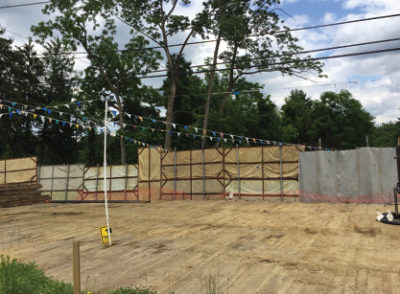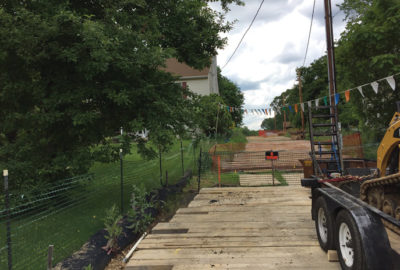
Failing to look beyond the last conveyance of ownership meant that clearing for pipeline installation was a surprise to many owners.
If they aren’t surveyors or in title or real estate practices, most people are not aware of every (or any) condition affecting the land they are buying. Many don’t realize that the title insurance policy they pay for at closing isn’t for them; it’s for the lending institution holding their mortgage. My own highly educated husband didn’t understand why we needed to pay for a second title policy until I explained it to him.
Without a title search, the last deed on record is all that the general public is likely to be aware of affecting their potential purchase. And most don’t even know how to read that. When my husband and I were in the process of purchasing our present home, I noted that the description of the lot was made up of two tracts, the result of an ancient minor subdivision to accommodate a nearly century old driveway next to the house running back to the garage way at the rear of the pie-shaped lot. At the closing table, I read through the draft deed to the property that was about to become ours and stopped everything: one of the two tracts was missing. Oops, said the title and legal people at the table—who should have caught it themselves—and off they went to fix it. My husband was clueless as to what was going on until I explained it to him, and then he was relieved by my save.

The temporary “wall” of plywood is not much of a sound and dust barrier as it crosses small residential lots.
Even with a title search, how many laypeople know what “easement” means? And in a place like Pennsylvania, where surveys are not required for land conveyances, there is no “in your face” notice that such encumbrances exist.
Just looking at the deed for the last conveyance isn’t enough to reveal that the current owners have done anything since their acquisition that could change encumbrances on the land. A lot of stunned and unhappy landowners are finding that out the hard way. The Mariner East Pipeline project has gotten a lot of press regarding people who don’t want it crossing their property, but now there are people in southeastern Pennsylvania who are learning too late that their grantors had given easements (typically 50 feet wide, plus temporary 25’ construction easements) to Sunoco Pipeline Company. In some cases the new owners knew of easements, but not of the proximity to their houses. In other cases new owners knew nothing of the expansion of existing easements to accommodate two additional pipelines. The private lots involved are not huge; the ones I looked at ranged from about a quarter acre to about three-quarters of an acre. I imagine that the arrival of large excavation equipment with accompanying dirt and noise would not be a pleasant surprise.
Years ago, I was involved in a case about what a surveyor is required to show on a plan, in this instance relating to the presence of wetlands that prevented the landowner from realizing his dreams of residential development on his 63-acre lot. But there was something else on the survey plan that should have tipped off the landowner that even without wetlands the site was unsuitable. Running diagonally across the entire tract was a 350’ wide power line easement, reserved for the installation of towers carrying high tension wires. The widely spaced pair of parallel dashed lines on the plan labeled with an abbreviation meant nothing to the would-be developer; the plan had no legend of symbols or abbreviations, and the surveyor volunteered no further explanation. The plan was meant to divulge conditions of record, and in particular to ascertain the number of acres for the “by the acre” price tag. In fact, it did so, but not in a manner the client understood. For the curious, the answer to this failed attempt at a lawsuit was that there was no written contract, and wetlands—especially when not delineated by a wetlands specialist—are not a standard feature or condition that surveyors are required to show, at least not in this jurisdiction. Of course, a written contract from the outset would have settled the entire matter much more expeditiously, but that is a different subject.
So how can the general uninitiated public be sure they understand what they are getting into property-wise? My husband says the answer is to marry a surveyor. Failing that, the next best thing is for surveyors to perform the public service of educating our clients to make sure they understand the terms, conditions, and details of their acquisitions. That process begins with writing the contract, when surveyors should be asking what purpose(s) the survey is intended to serve, and continues on through explanation of the deliverables, including warnings when anything seems to be a problem waiting to happen and referring the client to appropriate legal counsel.

